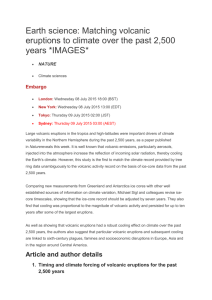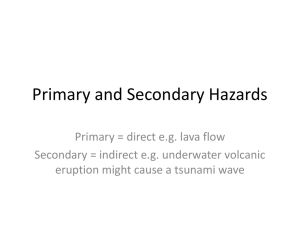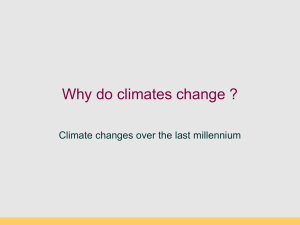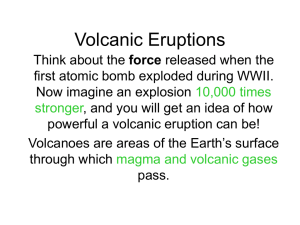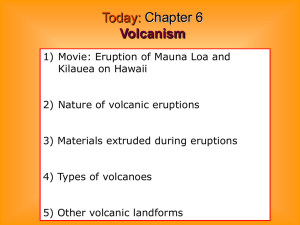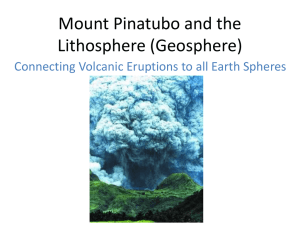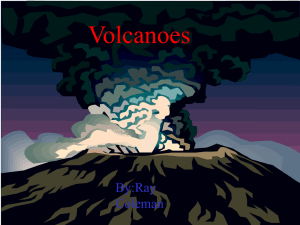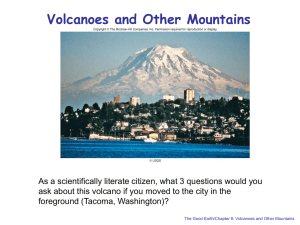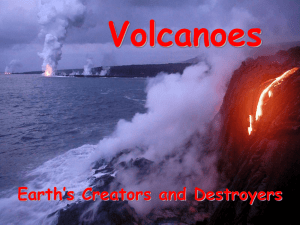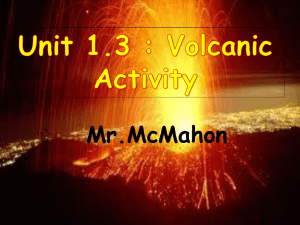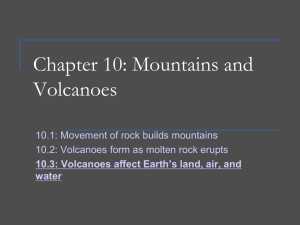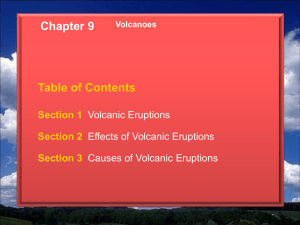Volcano Notes
advertisement
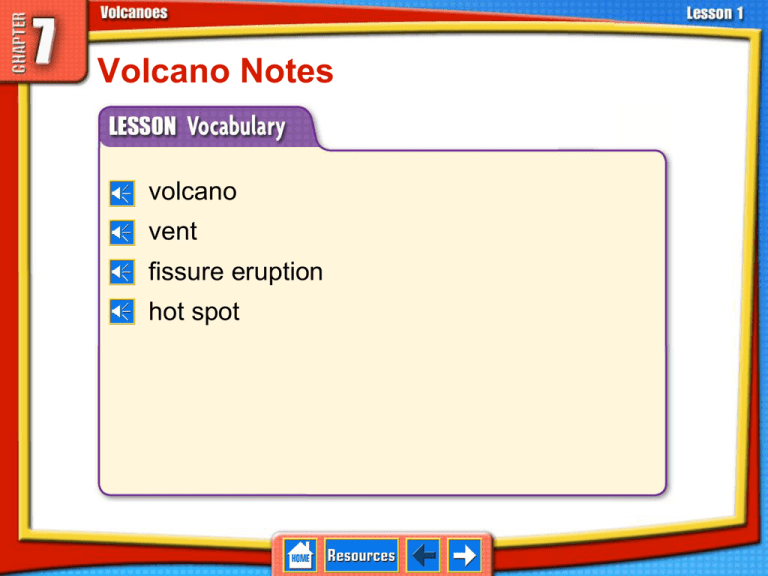
Volcano Notes volcano vent fissure eruption hot spot 7.1 Volcanoes and Plate Boundaries 1. How do volcanoes form? • When rocks become hot enough and conditions are right, they can melt. • Magma is less dense than surrounding rock. • Magma rises towards Earth’s surface because of the buoyant force pushing up. How a Volcano Works 7.1 Volcanoes and Plate Boundaries 2. Convergent Plate Boundaries • Volcanoes tend to erupt more violently. • Volcanic arcs—form when an oceanic plate subducts beneath a continental plate • Island arcs—form when two oceanic plates move toward each other 7.1 Volcanoes and Plate Boundaries 3. Divergent Plate Boundaries • Eruptions can occur in either the ocean, as a mid-ocean ridge, or on a continent, as a continental rift. • Magma reaches Earth’s surface as fissure eruptions. 7.1 Volcanoes and Plate Boundaries 4. Volcanoes Away from Plate Boundaries • Not all volcanoes occur along plate boundaries. • Hot spots are localized areas of high heat in Earth’s interior. • Hawaiian Islands 7.2 Volcanic Eruptions and Features 5. Types of Volcanoes • Shield Volcanoes – Huge, gently sloping volcanic landform – Mainly composed of basaltic lava – Hawaiian Islands are an example 7.2 Volcanic Eruptions and Features Types of Volcanoes (cont.) • Cinder Cone Volcanoes – Cone shaped – Mainly composed of solid fragments called tephra – Typically produce explosive eruptions 7.2 Volcanic Eruptions and Features Types of Volcanoes (cont.) • Composite Volcanoes – Forms tall, majestic mountains – Mainly composed of alternating layers of lava and tephra – Typically produce alternating quiet and explosive eruptions 7.2 Volcanic Eruptions and Features 6. Volcanoes in California • A variety of active volcanoes occur along the western coast of the United States. • Form at convergent plate boundary as part of a volcanic arc 7.3 Hazards of Volcanic Eruptions 7. Volcanic Ash • Volcanic ash is a very fine grained tephra. • Composed of tiny, sharp mineral and glasslike particles • Affects humans and wildlife habitats by burying plants and animals and their food sources and contaminating the water supply. 7.3 Hazards of Volcanic Eruptions 8. Lahars • A lahar is a rapidly flowing mixture of volcanic debris and water. • Some large lahars begin as landslides. • A fast-moving lahar provides little time for warning. 7.3 Hazards of Volcanic Eruptions 9. Gas Emissions • Gas released from volcanic eruptions can be a silent hazard to humans and wildlife. – Sulfur dioxide and hydrogen sulfide gases, when mixed with water, can form sulfuric acid precipitation. 7.3 Hazards of Volcanic Eruptions 10. Pyroclastic Flows • A fast-moving body of hot gases and solids • Can burn and destroy all forms of life in its path • Typically produced during explosive eruptions • Tend to follow valleys 7.3 Hazards of Volcanic Eruptions 11. Lava Flows • Occur from either an explosive or quiet volcanic eruption • Destroy human and wildlife habitats by starting fires and releasing smoke • Move slowly enough that humans can be warned of possible dangers
